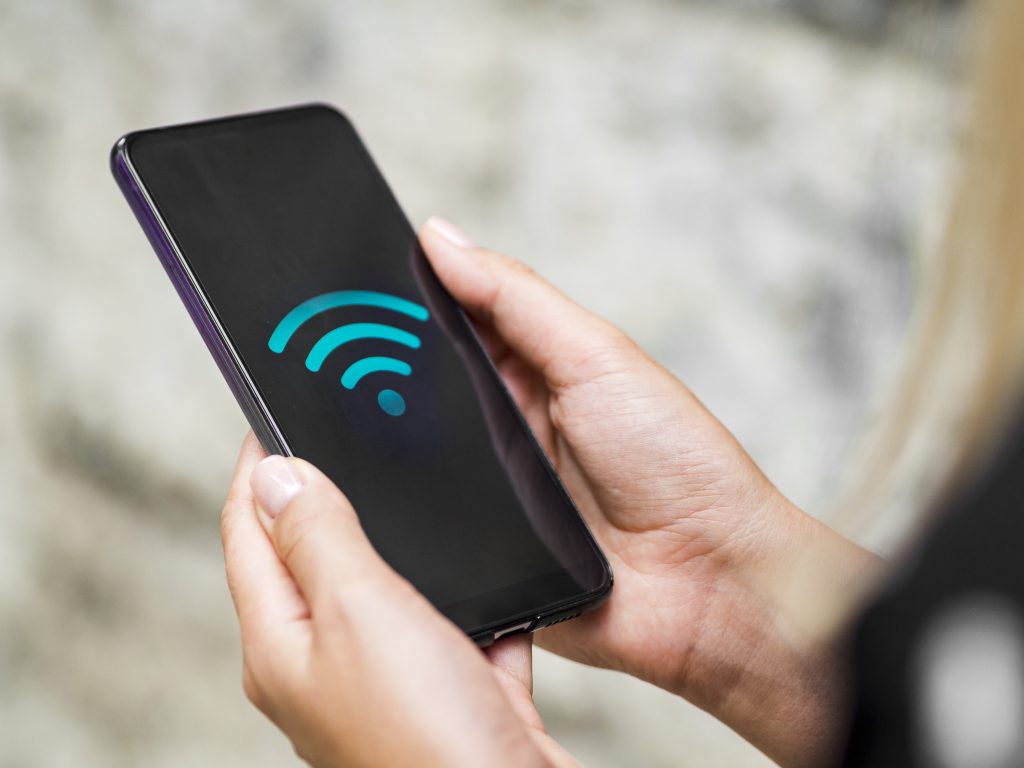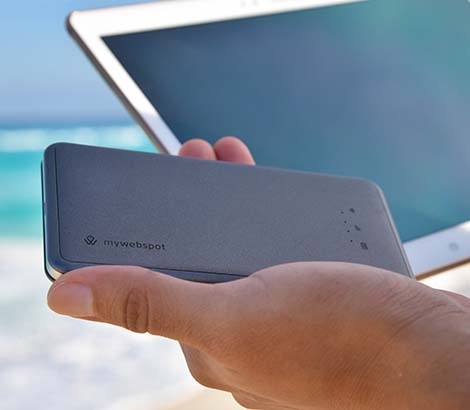A pocket WiFi router works by connecting to the Internet through a SIM card and creating a wireless hotspot for devices to connect to. It operates on a rechargeable battery and requires regular charging to function efficiently.
Portable WiFi routers are cost-effective as they do not require monthly fees or contracts, and they provide uninterrupted service through pay-as-you-go data plans. These devices are similar to traditional home WiFi routers but are smaller and more portable, making them ideal for on-the-go connectivity.
By utilizing a SIM card, portable WiFi routers offer flexibility and can be used with different SIM cards from around the world. Overall, pocket WiFi routers offer convenient and reliable Internet access for various devices.
Basic Functionality
When it comes to staying connected on the go, a pocket WiFi router offers the convenience of a wireless internet connection without the need for a fixed broadband connection. Understanding the basic functionality of a pocket WiFi router can help you make the most of this portable and versatile device.
Wireless Internet Connection
A pocket WiFi router works by creating a wireless local area network (WLAN) that allows devices such as smartphones, tablets, and laptops to connect to the internet. It uses a SIM card to access the internet and provides a secure WiFi network for multiple devices to connect to, offering internet access wherever you go. This functionality makes it an ideal choice for travelers, remote workers, and anyone in need of reliable internet connectivity on the move.
Multiple Device Connectivity
One of the key features of a pocket WiFi router is its ability to support multiple device connections simultaneously. Whether you’re traveling with family or friends, or you need to connect your work devices, a pocket WiFi router allows you to share the internet connection with multiple devices without compromising on speed or stability. This makes it the best pocket router for those who require seamless connectivity for their 5G-enabled devices, ensuring everyone stays connected without any hassle.

Credit: www.airtel.in
Components Of Pocket Wifi Router
Understanding the components of a pocket WiFi router is essential to grasp how this compact device operates seamlessly to provide internet connectivity on the go. Let’s delve into the internal hardware and external interfaces that make these routers efficient and convenient.
Internal Hardware
The internal hardware of a pocket WiFi router comprises essential components that enable its functionality.
External Interfaces
External interfaces of a pocket WiFi router play a crucial role in establishing connections with various devices.
Working Principle
Understanding the working principle of a pocket wifi router is essential to grasp how this innovative device keeps you connected on the go. The seamless operation of a pocket wifi router involves two key components: data transmission and signal reception.
Data Transmission
When you use a pocket wifi router, data transmission occurs through wireless signals, allowing you to access the internet without the need for physical cables. The router connects to cellular networks or satellites, depending on the provider, to transmit data securely and efficiently.
Signal Reception
The pocket wifi router receives signals from nearby cellular towers or satellites, ensuring a stable connection for your devices. It amplifies and distributes these signals to create a wifi hotspot, enabling multiple devices to connect simultaneously.
Network Modes
When it comes to how does a pocket wifi router work, it’s important to understand the network modes it operates on. Pocket wifi routers are designed to connect to the internet via various network modes, such as 3G, 4G, and 5G networks, providing users with the flexibility to access high-speed internet on the go.
3g, 4g, And 5g Networks
3G: Pocket wifi routers are capable of connecting to 3G networks, which offer reliable internet access in areas where 4G or 5G coverage may be limited. While 3G networks provide slower speeds compared to 4G and 5G, they ensure connectivity in remote locations.
4G: The best pocket wifi routers support 4G networks, delivering faster internet speeds for seamless browsing, streaming, and online activities. With 4G connectivity, users can enjoy high-quality internet access in most urban and suburban areas.
5G: As the latest advancement in wireless technology, 5G pocket routers offer blazing-fast internet speeds, enabling users to experience ultra-low latency and high-bandwidth connectivity. 5G networks are ideal for bandwidth-intensive applications and gaming.
Switching Between Networks
Network Switching: The best pocket wifi routers are equipped with the capability to automatically switch between 3G, 4G, and 5G networks based on the available coverage and signal strength. This seamless network switching ensures uninterrupted internet access, allowing users to stay connected regardless of their location.
Optimized Performance: By intelligently switching between networks, pocket wifi routers optimize performance and ensure that users experience the best possible internet speeds at all times. This feature is particularly beneficial for travelers and remote workers who require consistent and reliable connectivity.
Enhanced Flexibility: The ability to switch between different network modes provides enhanced flexibility, as users can access high-speed internet in a wide range of environments, from urban areas with robust 4G coverage to remote locations where 3G or 5G networks may be the primary source of connectivity.
Security Features
When it comes to the functionality of a pocket wifi router, it’s essential to consider its security features. Understanding how a pocket wifi router works and the security it provides is crucial for individuals and businesses looking for the best pocket wifi router to ensure their data remains secure, especially with the emergence of 5G pocket routers.
Encryption Methods
Encryption methods play a vital role in securing data transmitted through a pocket wifi router. These routers utilize advanced encryption standards such as WPA2 and WPA3 to protect data from unauthorized access. By encrypting the data packets, the router ensures that only authorized devices can access and decipher the transmitted information, providing a high level of security for users.
Firewall And Access Control
Another essential security feature of pocket wifi routers is the implementation of firewalls and access control. These routers often come equipped with built-in firewalls that monitor and control incoming and outgoing network traffic, preventing unauthorized access and potential threats. Additionally, access control features allow users to set up specific rules and restrictions for device connections, adding an extra layer of security to the network.
Credit: www.quora.com
Battery And Power Management
When it comes to understanding how does a pocket WiFi router work, it is essential to delve into its Battery and Power Management. The battery capacity, charging, and power-saving features play a crucial role in ensuring optimal performance for the best pocket router, especially in the era of 5G pocket router technology.
Battery Capacity
A pocket WiFi router’s battery capacity determines the duration it can operate without requiring a recharge. The higher the battery capacity, the longer the device can provide wireless connectivity, making it a vital consideration for users on the go.
Charging And Power Saving
Charging and power-saving features are essential aspects of a pocket WiFi router. Efficient charging mechanisms ensure quick recharging, minimizing downtime. Power-saving features help extend battery life, allowing users to stay connected for longer periods without draining the battery quickly.
Usage Scenarios
Introduction: When considering how does a pocket wifi router work, it’s essential to explore its various usage scenarios. Whether for travel and outdoor activities or as a backup internet connection, understanding the functionality of a pocket wifi router is crucial for optimal performance.
Travel And Outdoor Activities
When embarking on adventures, having the best pocket wifi router can ensure seamless connectivity while on the go. These compact devices provide internet access in remote locations, allowing travelers to stay connected and share their experiences effortlessly.
Backup Internet Connection
In cases where a stable internet connection is crucial, having a pocket wifi router as a backup is invaluable. When primary connections fail, these devices can step in to provide reliable internet access, ensuring uninterrupted productivity and communication.

Credit: www.my-webspot.com
Frequently Asked Questions
How Do You Use A Pocket Wifi Router?
To use a Pocket WiFi router, simply turn it on and insert a SIM card. Keep the device charged, as it runs on battery.
Do You Have To Pay Monthly For Portable Wifi?
No, you do not have to pay monthly for portable WiFi. You can purchase a pay-as-you-go portable router data plan SIM card that provides uninterrupted service while you roam. Portable WiFi routers work by connecting to the internet via a wireless local area network and acting as a hotspot for other devices to connect to.
It is essential to keep the device charged at all times since it works on battery power.
How Do Pocket Wifis Work?
A pocket WiFi connects to the Internet wirelessly through a local network, acting as a hotspot for various devices. Simply turn it on, insert a SIM card, and ensure it stays charged for continuous use.
Do You Need A Sim Card For Portable Wifi?
Yes, a portable WiFi router requires a SIM card to connect to the internet.
What Is A Pocket Wifi Router?
A pocket wifi router is a small device that creates a wireless network. It allows you to connect to the internet with multiple devices.
How Does A Pocket Wifi Router Work?
A pocket wifi router works by creating a wireless network that devices can connect to. It uses a SIM card to access the internet and broadcasts a wifi signal for other devices to connect to.
Do You Need A Sim Card For A Pocket Wifi Router?
Yes, a SIM card is required for a pocket wifi router to access the internet. You can use any compatible SIM card from a mobile carrier.
Conclusion
Pocket WiFi routers work by creating a wireless network for devices to connect to. Simply turn on the device, insert a SIM card, and stay charged for seamless internet access on-the-go. Enjoy the convenience of portable WiFi for uninterrupted connectivity wherever you are.







